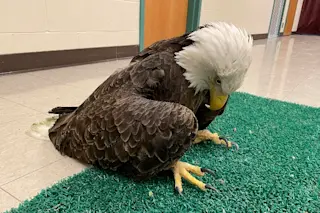Bald eagles had a near death experience in the 1960s. But with a ban on the pesticide DDT, along with vigorous conservation efforts, the majestic birds have roared back from the verge of extinction.
Now, however, both bald and golden eagles are facing another serious foe: lead.
Nearly half of these eagles in North America are suffering from widspread and frequent lead poisoning, according to a first-of-its-kind study published recently in the journal Science. The poisoning typically occurs when an eagle eats lead ammunition fragments lodged inside an animal carcass, or in gut piles left behind when hunted game is dressed in the field.
“This is the first study of lead poisoning of wildlife at a nationwide scale, and it demonstrates the unseen challenges facing these birds of prey," says Todd Katzner, one of the study's authors, quoted in a release from the U.S. Geological Survey. "We now know more ...














